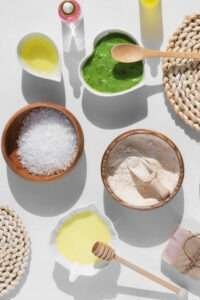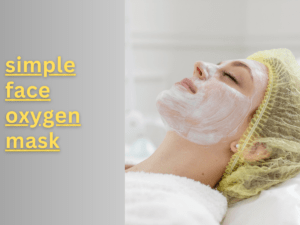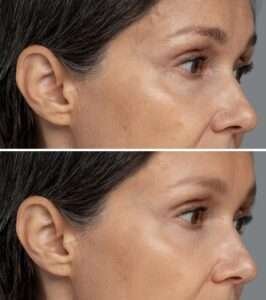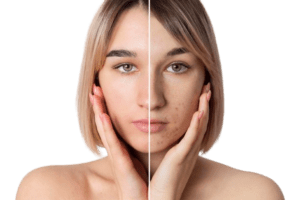Introduction to Muscle Knots in the Face

Muscle knots, clinically referred to as myofascial trigger points, are localized, hyper-irritable spots found within a muscle. These knots can cause significant discomfort and are capable of affecting various parts of the body, including the face. When these trigger points develop in facial muscles, they can lead to symptoms such as pain, stiffness, and tension, which can further exacerbate stress and anxiety.
Several factors contribute to the formation of muscle knots in the face. Stress is one of the primary culprits, as it often leads to involuntary clenching and tightening of facial muscles. Poor posture, particularly when sitting for extended periods or using electronic devices, can also strain the muscles in the neck and face, leading to the development of trigger points. Additionally, repetitive facial movements, such as those associated with expressions or habits like chewing gum, can overwork the facial muscles, increasing the likelihood of knots.
Addressing muscle knots in the face is crucial for several reasons. Firstly, these knots can cause persistent pain and discomfort, which can interfere with daily activities and overall quality of life. They can also lead to headaches, jaw pain, and even referred pain in other areas of the body. Secondly, chronic muscle tension in the face can negatively impact facial health and appearance, contributing to premature aging, the development of wrinkles, and a general look of fatigue and stress.
By understanding the causes and effects of muscle knots in the face, individuals can take proactive steps to alleviate pain and improve their overall facial health. Effective management of these knots not only enhances comfort but also promotes a healthier, more relaxed facial appearance. The following sections will delve into preventive measures, treatment options, and self-care techniques to help mitigate the impact of muscle knots in the face.
Symptoms and Diagnosis of Muscle Knots in the Face
Muscle knots in the face, also known as myofascial trigger points, can manifest through a variety of symptoms. Individuals experiencing these knots often report localized pain and tightness in the affected area. This discomfort can sometimes radiate, leading to headaches or referred pain in nearby regions such as the neck, jaw, or even the shoulders. The sensation is often described as a persistent ache or a feeling of pressure that doesn’t subside with time.
Aside from pain, muscle knots in the face can also cause stiffness and limited range of motion. This can make everyday activities, such as chewing and speaking, particularly uncomfortable. In some cases, individuals may notice swelling or tenderness upon touching the affected area, which can further exacerbate the discomfort.
Diagnosing muscle knots in the face typically begins with a detailed medical history and a thorough physical examination by a healthcare professional. During the examination, the practitioner will palpate the muscles of the face, looking for areas of tenderness or tight bands of muscle fibers. They may ask the patient to perform specific movements to assess the range of motion and identify any patterns of referred pain.
In some cases, imaging technologies such as ultrasound or magnetic resonance imaging (MRI) might be utilized to rule out other potential causes of pain, such as structural abnormalities or inflammatory conditions. However, these modalities are often supplementary and not always necessary for a diagnosis.
Early detection of muscle knots is crucial to prevent the progression of symptoms and avoid potential complications. Ignoring these symptoms can lead to chronic pain, increased muscle tension, and a reduction in the quality of life. Therefore, it is essential for individuals experiencing persistent facial pain or discomfort to seek professional evaluation and appropriate intervention at the earliest opportunity.
Effective Treatments and Home Remedies
Muscle knots in the face, also known as myofascial trigger points, can be a source of persistent discomfort. Fortunately, several effective treatments and home remedies can help alleviate these knots. It’s crucial to approach these methods with consistency and patience, as relief often requires ongoing effort.
Professional treatments offer reliable ways to address muscle knots. Physical therapy is one such method, where a therapist will use targeted exercises and manual techniques to alleviate tension and improve muscle function. Massage therapy is another effective option, with techniques like deep tissue massage and myofascial release specifically designed to break down muscle knots. Acupuncture, an ancient Chinese treatment, involves inserting fine needles into specific points on the face to release muscle tension and promote healing.
For those seeking home remedies, several practical options can be easily integrated into daily routines. Stretching exercises are particularly beneficial for relieving muscle knots in the face. Gentle movements such as jaw stretches, neck tilts, and facial yoga can help relax the muscles and reduce tension. Warm compresses are another simple yet effective remedy. Applying a warm cloth to the affected area for 15-20 minutes can increase blood flow and relax the muscle fibers.
Self-massage techniques are also valuable for managing facial muscle knots. Using your fingers, apply gentle pressure to the knot and massage in circular motions. This can help break down the tension and improve circulation. Another helpful technique is to use a tennis ball or a specialized massage tool to apply pressure to the affected area, which can be particularly useful for hard-to-reach spots.
Consistency in these treatments is key. Incorporating these practices into a daily routine can provide gradual relief and prevent future muscle knots. It’s also important to maintain proper hydration, as dehydration can contribute to muscle tension. Regularly practicing these methods can lead to significant improvements in facial muscle health, offering a more comfortable and pain-free life.
Preventive Measures and Lifestyle Changes
Preventing muscle knots in the face requires a proactive approach that integrates proper posture, stress management, ergonomic adjustments, and regular facial exercises. These measures not only help in minimizing the occurrence of muscle knots but also promote overall facial health.
Maintaining proper posture is essential. Poor posture, especially when sitting for long periods or using electronic devices, can lead to muscle tension and knots. Ensure that your workspace is ergonomically set up. This includes having your computer screen at eye level, using a chair that supports your lower back, and taking regular breaks to stretch and move around.
Stress is a significant factor that contributes to muscle tension. Adopting stress management techniques is crucial. Practices such as deep breathing exercises, meditation, and mindfulness can help in reducing stress levels. Regular physical activity, such as yoga or even a daily walk, can also aid in alleviating stress and preventing muscle knots.
Ergonomic adjustments are not limited to your workstation. Consider the importance of your sleep environment as well. Use a supportive pillow that maintains your neck and head in a neutral position. Avoid sleeping on your stomach as it can cause strain on your facial muscles.
Incorporating regular facial exercises into your routine can significantly benefit your facial health. Simple exercises such as gently massaging your face, performing facial stretches, and practicing facial yoga can improve blood circulation and reduce muscle tension. These exercises can easily be integrated into your daily routine, for instance, while applying your skincare products or during a short break.
Being proactive about your facial health is key to maintaining a knot-free face. By adopting these preventive measures and lifestyle changes, you can effectively minimize the occurrence of muscle knots and enjoy a healthier, more relaxed facial appearance.
















